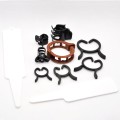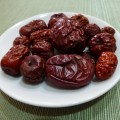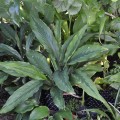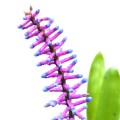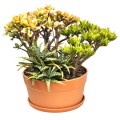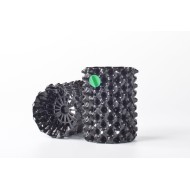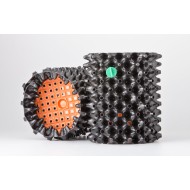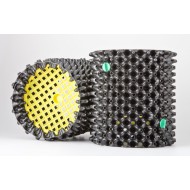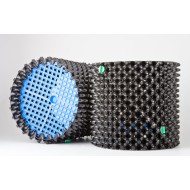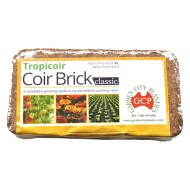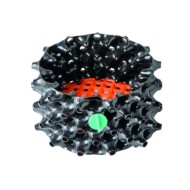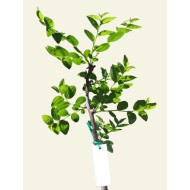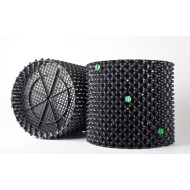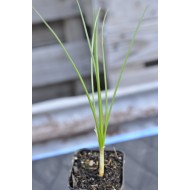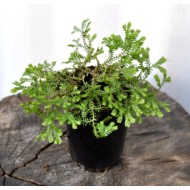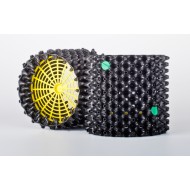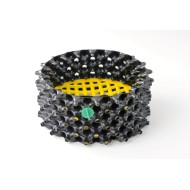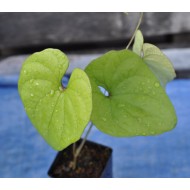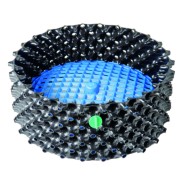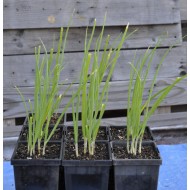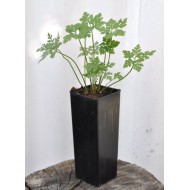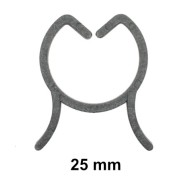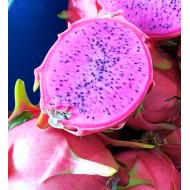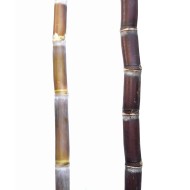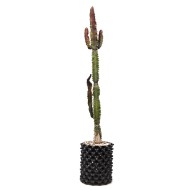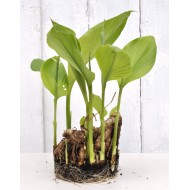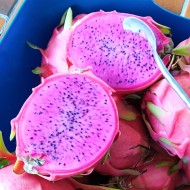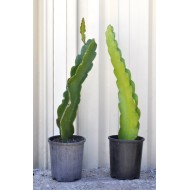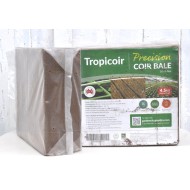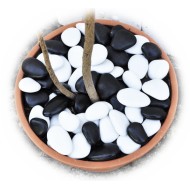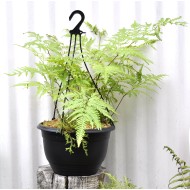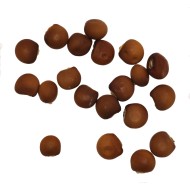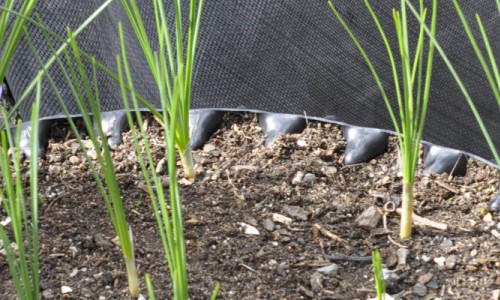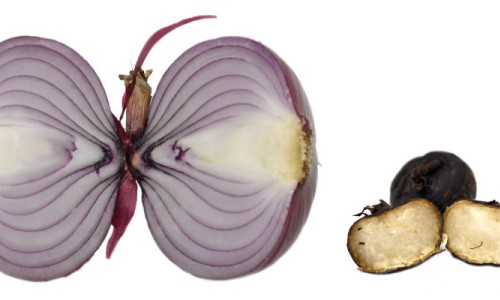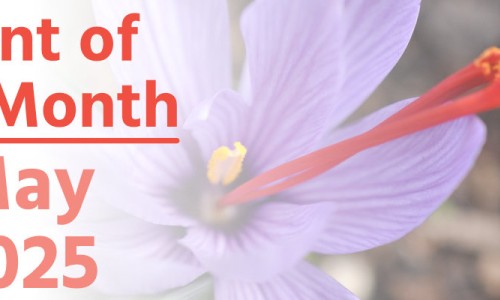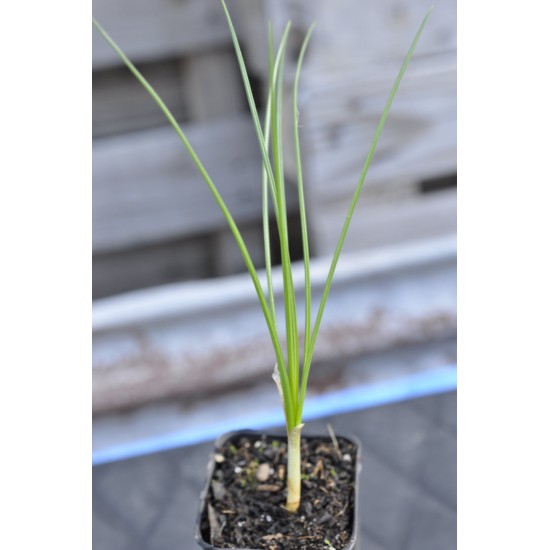
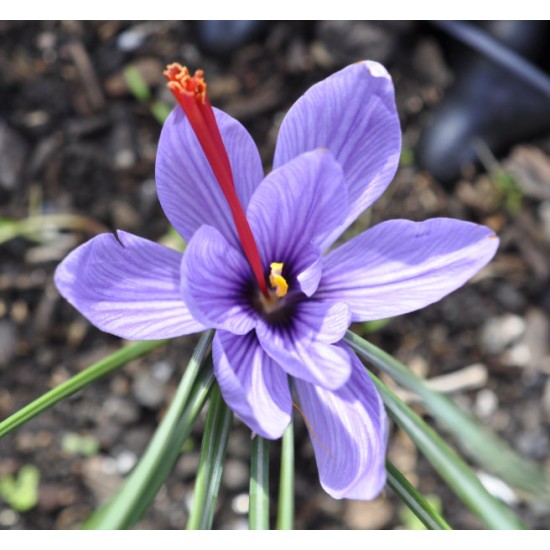


- Stock: Pre-Order
- Model: saffron-50mm-tube
Family: Iridaceae (includes freesias, gladioli, and crocuses)
Genus: Crocus (includes crocuses)
Botanical/Binomial Name: Crocus sativus
Crocus, from Latin crocus, from Ancient Greek κρόκος (krókos, ‘saffron’); and
sativus, from Latin satīvus (‘sown, planted’): denotes a cultivated species when used as the species name in taxonomy
Common Names: Saffron
Botanical Characteristics: Herbaceous | Cormous | Perennial | Frost hardy
Propagation: Corms
Item Description:
The photo is indicative of, and not necessarily identical to, the plant you would receive. The leaves will vary from 100 mm to 200 mm high.
These plants are from last year’s new and undersized corms and are not likely to flower this season. They are however all strong and healthy.
Really what you are purchasing here is the growing corm, which typically produces another two or three corms above it, and thus chances are high that you will triple or even quadruple the number of plants next year.
Dimensions of the tube are 50 mm square × 120 mm deep. The square tube shape produces beautifully straight and deep roots, which gives these young plants every advantage once planted out.
These tubes are second-hand and some have tears at the top. These were deliberately chosen for these saffron plants — saffron need to be planted in the ground, but pulling a plant out of the tube risks damaging its corm and roots. The best way to reduce risk is to cut the tube away, so why not use a tube which is already damaged?!
Plant Description:
Saffron is a perennial herbaceous plant with long thin leaves about 100 mm to 300 mm high. After a long spring-summer dormancy, the leaves grow from an underground corm (similar yet different to a bulb) in late summer/early autumn and flower mid-late autumn.
It is the flower which is highly prized, as the saffron threads used in cooking are the vivid red stigmas and styles, visible in the second photo. The stigma is the female part of the flower which receives pollen, and the style is the female part of the flower connecting the stigma to the ovary.
Saffron is one of the world’s most expensive spices owing to its low yield and labour-intensive harvest — with just three stigmas per flower, which must be hand-plucked, many hours and many stigmas are required for a commercial yield.
Growing Information:
Saffron corms are very hardy and easy to grow in pots or in the ground. Destroy the tube each plant comes in by cutting down the sides, and plant in full sun and in well-drained soil rich in organic matter. Cold winters are essential for flowering to occur the following autumn.
Each corm typically grows another two or three above it, thus each plant is capable of tripling or even quadrupling.
I strongly recommend they have excellent drainage, and do consider growing in raised beds or deep pots if you have wet winters. I only grow my saffron in the 20 L and 38 L Air-Pot containers because of the exceptional aeration and drainage they provide.
Corms can be left in place when they enter dormancy, but overcrowding over time will reduce flowering and quality. It is best to lift and replant the separate corms 100 mm to 150 mm apart at the end of summer — this is another reason I only use Air-Pot containers as it’s too easy to undo the wall and allow everything to spill out and pick through. There is also zero risk of damaging the corms with trowels or other digging tools, as no digging is required!
Small corms are not likely to flower that year, but will still grow a healthy plant which helps the corm itself grow. Larger corms are more likely to produce multiple blooms. A corm lasts up to five years and will have multiplied itself several times over by then.
Local pick-up is welcome — we’re in Gwynneville, near Wollongong University.
Pick-up is by mutual arrangement please, as we don’t have a shopfront.
Having said that, we are always here and more often than not can easily fit in with whichever day and time suits you best!
Feel free to suggest preferred pick-up time(s) in the comments box during checkout and we’ll reply as soon as we see the notification.
Especial Note Regarding Large Air-Pot® Orders
Depending on the order, we may suggest that large Air-Pot® orders are best sent directly to you from the warehouse.
Especial Note Regarding Jujube Trees
When posting out bare-rooted jujube trees, we routinely trim them to fit the box and keep postage costs to a minimum. These trees are typically knee-high when planted out, though some may be smaller.
This of course doesn’t apply for pick-ups, and in fact we will set aside the tallest trees specifically for this purpose. These trees can often be hip-high, and sometimes taller again.
Please note that this is not a guarantee, as heights of different cultivars can differ from year to year.

